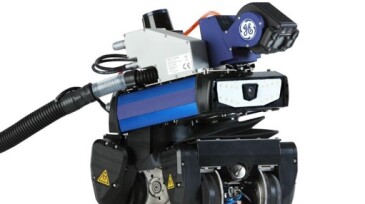safety
-
Advanced nondestructive-testing technology such as drones and robotics were tried in Abu Dhabi National Oil Company gas-processing field sites successfully and demonstrated the benefits of using such technology for inspections to ensure asset integrity without any compromise on safety while saving time and operational expenses.
-
SponsoredWhite Paper—The Ultimate Guide to e-Permit to Work: The Top Three Benefits of Moving Away From PaperMoving to an electronic permitting process can ensure proper and timely authorizations for work between office and field.
-
During the past decade, industries have made tremendous efforts in developing robust and effective systems in health, safety, and environment. Now, companies are called on to focus on process safety as well.
-
The biggest drilling company appears interested in becoming the most innovative. It is testing inventions ranging from a blowout preventer that is not hydraulically powered to power systems designed like a hybrid car.
-
Safety depends on developing a dedicated culture mind-set and mitigation of risks, from the planning and engineering phases to the work site. These papers selected by OGF technical paper editor Gerald Verbeek present various practices for reducing and eliminating the number of incidents.
-
For employees to report on safety incidents, there must be a ‘just culture,’ where issues can be discussed freely and underlying causes investigated and corrected without fear of punitive actions.
-
Companies in the petroleum industry, from exploration and production, to transportation, refining, and distribution, operate around the clock. This paper intends to raise awareness on the impact of fatigue in the petroleum industry and recommend a framework for fatigue risk management.
-
The emotional involvement of participants during the initial phase of a safety campaign increases implementation effectiveness significantly. In this case, a film guides the audience to make positive, personal choices whenever planning and operating a work at height.
-
Considering most of the rigs deal with human-machine interface systems, the role of human factors is at the heart of any successful operation. Eye-tracking technology can be useful in real-time operation centers where ocular movement data can improve the professionals’ performance.
-
What is the reality of risk in the hydrocarbon sector? In this roundtable discussion, senior industry executives discuss what happens when process safety intent meets the reality of operations.









